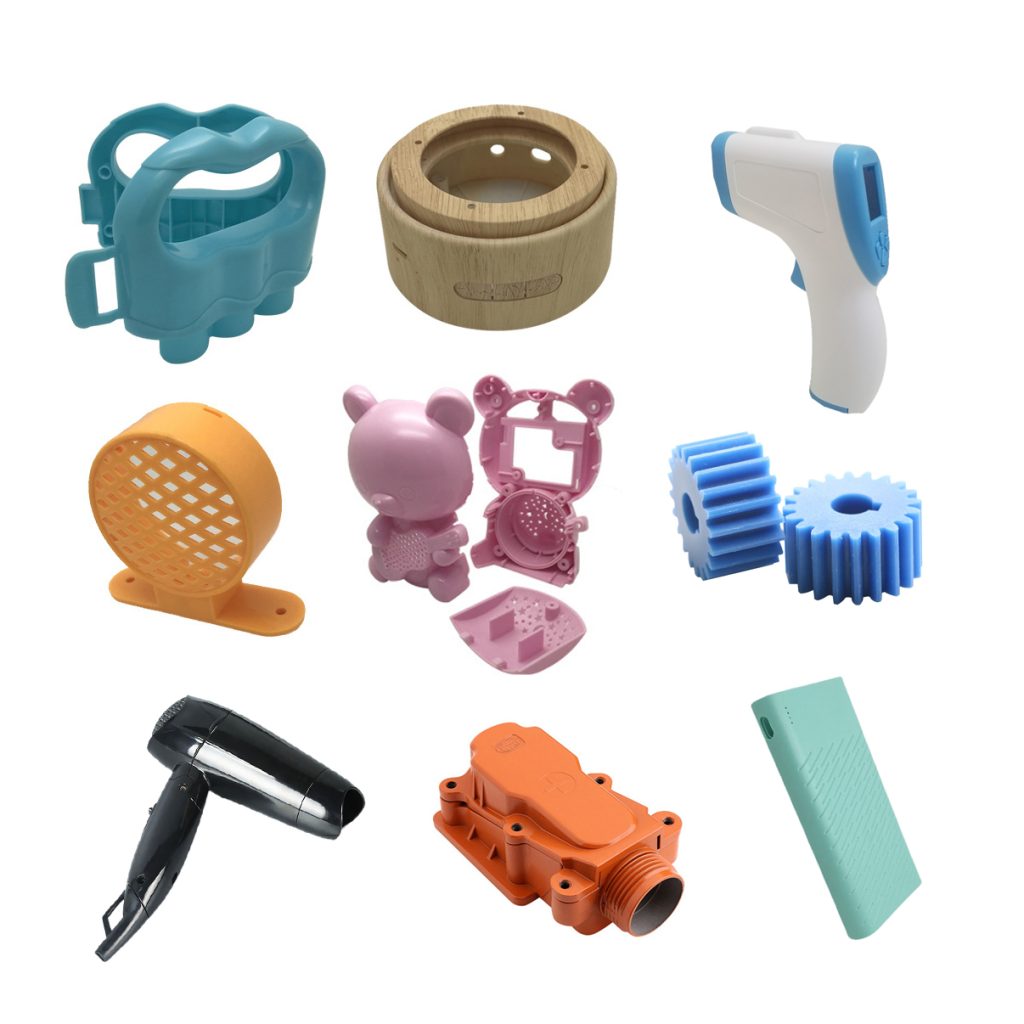Injection molding flash is a common defect in injection molding, where a small amount of material seeps out of the mold cavity and forms a thin, excess layer around the part. Flash can occur due to a variety of reasons, such as improper tooling design, excessive injection pressure, or insufficient clamping force.
What Cause Injection Molding Flash
1. Insufficient clamping force
When the injection pressure is greater than the clamping force, the parting surface of the mold is not well sealed, and flashing is easy to occur. In this regard, it should be checked whether the pressurization is excessive, and at the same time, it should be checked whether the product of the projected area of the plastic part and the molding pressure exceeds the clamping force of the equipment. Molding pressure is the average pressure in the mold, usually calculated as 40mpa. When producing box-shaped plastic parts, the molding pressure value of polyethylene, polypropylene, polystyrene, and ABS is about 30mpa; when producing plastic parts with deep shapes, the molding pressure value is about 36mpa; when producing small plastic parts with a volume of less than 10cm3 When plastic parts, the molding pressure value is about 60mpa. If the calculation result is that the mold clamping force is less than the product of the projected area of the plastic part and the molding pressure, it indicates that the mold clamping force is insufficient or the injection molding positioning pressure is too high. The injection pressure should be reduced or the cross-sectional area of the injection port should be reduced, the pressure holding and pressurization time can also be shortened, the injection stroke should be reduced, or the number of cavities should be reduced and the injection molding machine with a larger clamping tonnage should be considered.
2. Material temperature is too high
The melt viscosity of the high-temperature melt is small, the fluidity is good, and the melt can flow into the small gap in the mold to produce flashing. Therefore, after flashing occurs, it should be considered to properly reduce the barrel, nozzle and mold temperature, and shorten the injection cycle.
For low-viscosity melts such as polyamide, it is very difficult to solve the defect of flash and flash only by changing the molding conditions. While appropriately lowering the temperature of the material, the mold should be precisely machined and repaired as much as possible to reduce the mold gap.
3. Mold defects
Mold defects are the main cause of flashing. When there are more flashings, the mold must be carefully inspected. The parting surface should be re-checked to align the movable mold with the fixed mold, and check whether the parting surface is Adhesive fit, whether the wear gap of the sliding parts in the cavity and core part is out of tolerance. Whether there are adhesions or falling foreign matter on the parting surface, whether the templates are parallel, whether there is bending deformation, whether the opening distance of the template is adjusted to the correct position according to the thickness of the mold, whether the surface of the guide pin is damaged, whether the tie rod is deformed or not. In general, whether the exhaust slot is too large or too deep. According to the results of the above-mentioned step-by-step inspection, the errors generated can be eliminated by mechanical processing.
4. Improper control of process conditions
If the injection speed is too fast, the injection time is too long, the injection pressure is unevenly distributed in the cavity, the filling rate is not balanced, and the amount of material added is too much, excessive use of lubricant will cause flashing, and the operation should be specific to the situation Take appropriate measures. It is worth noting that the troubleshooting of flash flashing must start with troubleshooting the mold. If the molding conditions or raw material formula are changed due to flash flashing, it will often have adverse effects on other aspects and easily cause other molding failures.
How to Prevent Injection Molding Flash
Flash can cause several problems such as poor product appearance, increased product cost, and decreased durability. It can also result in the rejection of the entire batch of molded parts if flash is found to be too extensive.
To prevent flash, manufacturers use various methods such as optimizing molding parameters, improving mold design, and controlling machine pressure. Additionally, regular maintenance of the equipment and mold can also help prevent the occurrence of flash.
Injection molding flash is an undesirable occurrence where excess material escapes from the mold cavity during the molding process. It can lead to the production of defective parts, which can result in an increase in production costs and time. Here are some prevention measures:
Adjust the clamping force: Ensure that the clamping force is adequate to hold the two halves of the mold together and to resist the pressure applied during the injection molding process.
Optimize the gate design: The gate is the opening in the mold through which the plastic material is injected into the cavity. Proper design and placement of the gate can help prevent flash.
Reduce injection speed: The injection speed should be kept within the recommended range. A higher injection speed can result in excess material seeping out of the mold.
Employ an appropriate runner system: The runner system is the network of channels that transport the plastic material from the injection molding machine to the mold cavity. Properly designed and sized runner systems can prevent flash.
Control the temperature: Maintaining a consistent temperature throughout the process can help prevent flash. This includes the temperature of the mold, the plastic material, and the injection molding machine.
Monitor the process: Regular monitoring of the injection molding process can help detect flash early, allowing for corrective measures to be taken before it becomes a serious problem.

